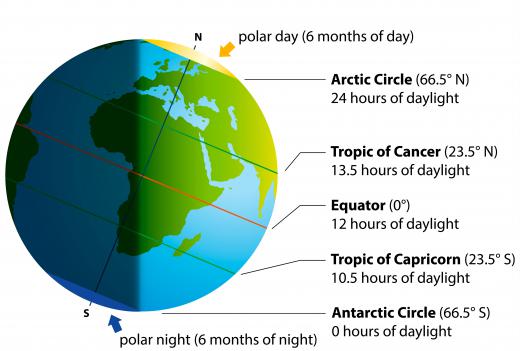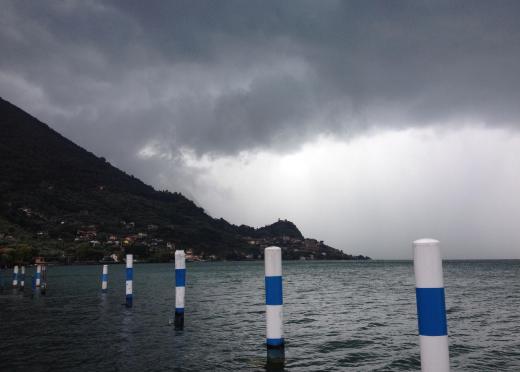What Is Marine Climate?
The marine climate, also known as the oceanic climate, maritime climate, or marine west coast climate, is a temperate climate that exists on the west coasts of continents. These climates are usually found between the latitudes of 45° and 55°, although in western Europe they extend further north. They are characterized by mild weather, even levels of precipitation, and a narrow annual range of temperature. Conditions within these regions vary according to location and topography.
The cool summers and warm winters of marine climates are caused by ocean air being blown ashore by the westerlies, the prevailing winds blowing from west to east in middle latitudes. These areas exhibit a narrower variation in annual temperature than areas receiving winds coming over land. The mitigating effect of large bodies of water on temperatures is due to the high specific heat of water: it takes more energy to raise the temperature of a certain amount of water than it does an equivalent amount of air or land. Temperatures over oceans therefore do not fluctuate widely.

In some cases, warm ocean currents have a mitigating effect on the temperature of nearby land, helping to create the marine climate. An example of this effect can be seen with the Gulf Stream, a major current in the Atlantic Ocean that carries warm water northwards up the coast of North America and around to western Europe. Meteorologists believe that western Europe’s climate is warmer than it otherwise would be due to the effects of the Gulf Stream.

Ocean air carries moisture, so marine climate areas feature steady precipitation throughout the year, along with heavy cloud cover and high humidity. Snowfall is also common in these areas during the winter. Although these climates do not have a fully dry season, some exhibit a drying trend during the summer.
Mountain ranges have a major impact on how the marine climate is dispersed across land. In North and South America, mountain ranges often run from north to south, effectively blocking the path of westerlies and the ocean air. This causes the climate region to spread in narrow bands up and down the coast. In Europe, on the other hand, mountain ranges running from east to west allow the ocean air to penetrate further inland, creating an extensive marine climate throughout much of the continent.
In addition to the Marine Temperate climate found at the middle latitudes, other varieties exist in higher and lower latitudes. Some areas in subpolar regions exhibit marine climate characteristics, making them Subpolar Oceanic climates. The term Subtropical Highland is used to refer to regions that have a marine climate due to the cooling effects of high elevation but are located at lower latitudes, in the tropics.
AS FEATURED ON:
AS FEATURED ON:












Discussion Comments
@pleonasm - Every place has a rhythm, but they aren't all the same. In some regions in the world they don't look forward to snow, but rather expect to have monsoon season instead. In others they might experience dust storms, or other weather patterns at certain times of the year.
I have to admit, I prefer the West Coast marine climate because it's subtle. You have to pay attention to know what time of year it is, if you care about that kind of thing. And it's easy enough to go elsewhere to get the extremes, but you've got the relief of being able to come home again whenever you like.
@clintflint - I actually prefer a climate with a few extremes. I like being able to enjoy the snow and the summer sun while they last. An ocean climate is nice as well, of course, but it has always been the kind of place I'd prefer to just visit rather than live there. It doesn't seem to have the same rhythm that I'm used to.
This is a very pleasant climate to live in. You don't have to worry about extreme temperatures and you hardly ever have the misery of one weather pattern setting in and not relenting for months.
The only thing you have to worry about is the rain, since a temperate marine climate almost always seems to come with more rain than usual. It's worth it, though, because the area is almost always green and lush because of this.
Post your comments